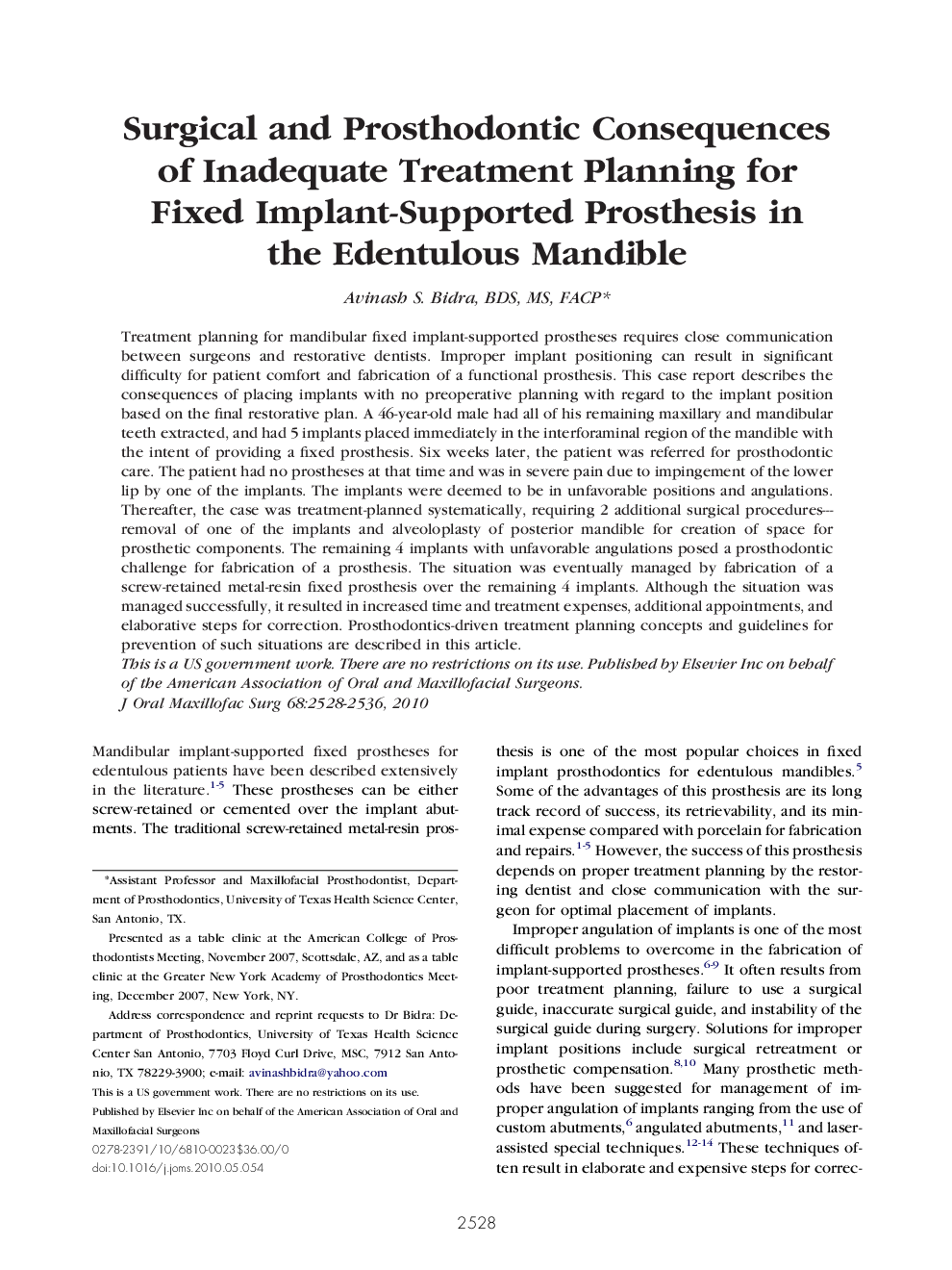| Article ID | Journal | Published Year | Pages | File Type |
|---|---|---|---|---|
| 3158978 | Journal of Oral and Maxillofacial Surgery | 2010 | 9 Pages |
Treatment planning for mandibular fixed implant-supported prostheses requires close communication between surgeons and restorative dentists. Improper implant positioning can result in significant difficulty for patient comfort and fabrication of a functional prosthesis. This case report describes the consequences of placing implants with no preoperative planning with regard to the implant position based on the final restorative plan. A 46-year-old male had all of his remaining maxillary and mandibular teeth extracted, and had 5 implants placed immediately in the interforaminal region of the mandible with the intent of providing a fixed prosthesis. Six weeks later, the patient was referred for prosthodontic care. The patient had no prostheses at that time and was in severe pain due to impingement of the lower lip by one of the implants. The implants were deemed to be in unfavorable positions and angulations. Thereafter, the case was treatment-planned systematically, requiring 2 additional surgical procedures---removal of one of the implants and alveoloplasty of posterior mandible for creation of space for prosthetic components. The remaining 4 implants with unfavorable angulations posed a prosthodontic challenge for fabrication of a prosthesis. The situation was eventually managed by fabrication of a screw-retained metal-resin fixed prosthesis over the remaining 4 implants. Although the situation was managed successfully, it resulted in increased time and treatment expenses, additional appointments, and elaborative steps for correction. Prosthodontics-driven treatment planning concepts and guidelines for prevention of such situations are described in this article.
